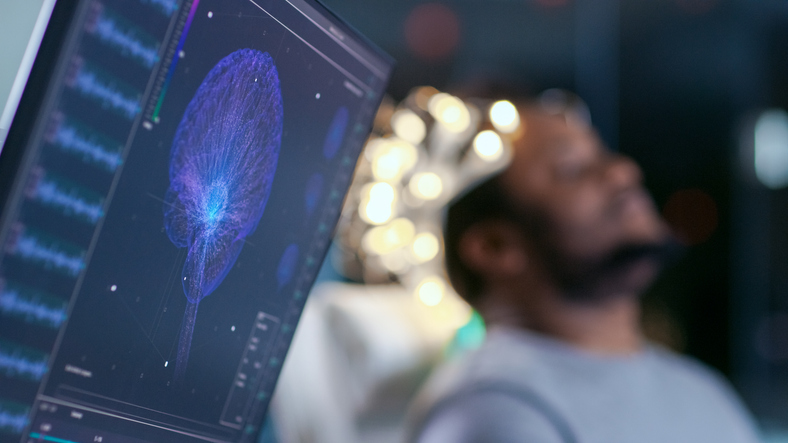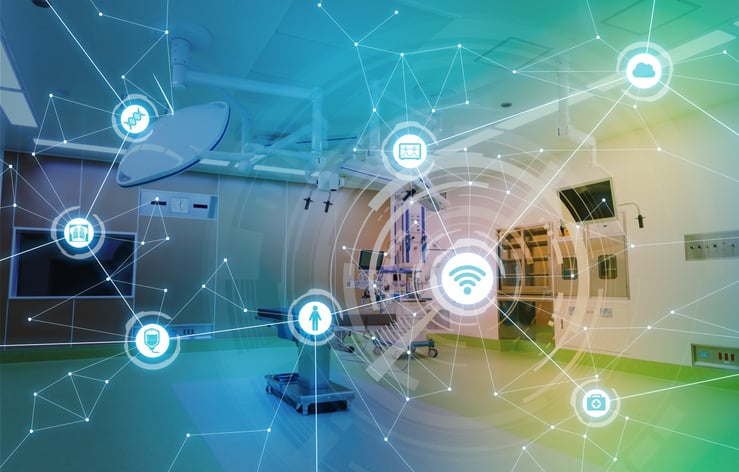[Timeline] Creating Sensor Technology in Healthcare

When a new custom sensor for your medical device is needed, chances are you needed it yesterday.
Unfortunately, custom-created sensors don't just appear. And the chances of a sensor manufacturer having a custom sensor that somehow matches your medical device and its performance requirements already in stock and in volume are almost non-existent.
While it would be wonderful to have the exact sensor you need exactly when you needed it, the reality is custom sensor technology in healthcare takes time to conceptualize, design, and manufacture at scale.
Let's take a look at what it takes to make a custom sensor for your OEM medical device a reality.
7 Steps to Developing Custom Sensor Technology in Healthcare| Start to Finish
When it comes to creating a customized sensor solution for medical devices, the #1 thing to be aware of …
Actually, there are two #1 things: It takes time and it's an involved process.
Because a sensor that's created for your OEM medical device is completely unique, the process to make it is essentially cooking from scratch.
What does the process of developing a custom sensor solution look like?
In a general sense, there are seven steps to developing a custom medical sensor with a sensor manufacturer:
- Initial consultation
- Drawing exchange
- Quoting
- Prototype development
- Sample performance review
- Product qualification/certification testing
- Full production
1. Initial Consultation
As the first step, this part of your journey to getting a sensor made for your device is the most important. Setting the stage for what you'll create, you'll go over all the details of your sensor and its application. This includes elements such as:
- Sensor application – Exactly what will the sensor be used for? How will it be used?
- Sensitivity requirements – While accuracy is critical, the level of required precision varies depending on the intended application
- Temperature range – The thermal range your sensor needs to function effectively
- Environmental considerations – How much moisture, dust, and other environmental factors will the sensor encounter?
- Connectivity – Does the sensor need a wired or wireless connection for data transmission?
- Intended lifespan – Is the sensor disposable or reusable? If reusable, what's the ideal useful life for the device?
- Any special design considerations – e.g. material selection, size, housing
2. Drawing Exchange
 With an understanding of what the final product should look like, the sensor design team gets to work on distilling that vision into an actual engineering drawing. After the drawing is completed, we'll send you a copy of it for your review. In almost all cases, there's an element of back-and-forth to further refine your sensor's plans.
With an understanding of what the final product should look like, the sensor design team gets to work on distilling that vision into an actual engineering drawing. After the drawing is completed, we'll send you a copy of it for your review. In almost all cases, there's an element of back-and-forth to further refine your sensor's plans.
In a certain respect, this is like going over proposed schematics for a custom home – you'll be looking at a very detailed plan.
In addition to the sensor's dimensions, you'll have other elements to review, such as material selection, wiring diagrams, and other finer points of the sensor's assembly.
And chances are you'll likely need a few rounds of tweaking and adjustment to get a design that meets – and exceeds – expectations.
3. Quoting
Having an agreed-upon design with the specifics for your sensor, your sensor manufacturer will draw up a quote.
The quote should include a breakdown of:
- Unit cost at volume
- Prototyping costs
- Shipment logistics
- Turnaround time (relative to the order’s size)
- Tooling cost considerations
- Non-recurring engineering fees (if applicable)
4. Prototype Development
This is where the rubber starts hitting the road and you'll get your first real-world glimpse of what the final product will look like. It's also another layer of review.
Your manufacturer will use the CAD, BOM, and other product documents from the design phase to create physical prototypes. This is an important moment in development as you'll be able to interact with a physical version of your product before committing it to production.
With these initial samples, you'll be able to look at the critical-to-quality elements such as the biocompatible materials used or conduct preliminary tests for functionality and performance.
The prototype phase is also where you can make major tweaks or adjustments as needed.
5. Sample Performance Review
A step up from a prototype, a sample is the next closest thing to the final product.
Just like with the prototype, you'll review the sample for performance, functionality, and quality – but at a much more detailed level. More specifically, you'll evaluate:
- The accuracy of the sensor in detecting and measuring data
- The consistency and reliability of the sensor's performance over time
- The durability of the sensor against the rigors of real-world use without breaking or malfunctioning.
- The ease of use and user-friendliness so that it is intuitive and straightforward for medical professionals to use.
- The size and fit of the device into its intended application.
While it's possible to make changes to the sensor before the final step, this is the last best chance to make adjustments without impacting your project's timeline or budget drastically.
6. Product Qualification/Certification Testing
Another layer of review, qualification and certification testing is designed to prove the sensor's ability to work safely and accurately in its intended environment.
This type of testing ensures that your medical device meets all applicable national, international, and industry standards set by the FDA, CE, or the EU's MDD. It's often completed by independent third parties, who review a wide variety of elements such as:
- Radiofrequency emissions
- Electromagnetic compatibility
- Environmental conditions, including temperature and humidity resistance.
- Materials safety/biocompatibility
- Power usage / efficiency
Documentation and reporting processes are also critical components of the product certification process. Manufacturers must provide extensive documentation and data to demonstrate that their prototype medical sensors meet all necessary standards and regulations. This includes detailed technical files, labeling information, user manuals, and other data that demonstrate compliance with regulatory requirements.
7. Full Production
After all of the above steps have been completed, your sensor is ready for full production!
That means your sensor manufacturer will now produce the sensors according to the agreed-upon quality, quantity, and timeline.
It's also important to note that during full production, manufacturers need to continuously monitor their manufacturing processes for product consistency and quality control purposes. This is a key step in producing a high-quality medical sensing solution that meets all regulatory requirements and customer expectations.
How Long Does it Take to Make a Custom Medical Sensor?
Next to "How much does a sensor cost?" this is a question we field a lot – understandably so.
In general, the process outlined above takes about a year and a half to complete. That timeline however can be affected by several factors:
- Your Level of Readiness – In most cases those we work with come to the table knowing many of the key details about the sensor they need, such as sensitivity, size, and intended lifespan. Others, however, are still in the early stages of their own product development and are a ways off from getting deep into the specifics of their sensor needs. In the case of the latter, it's simply going to take a longer time to get through the initial stages of conceptualization and development as sensor specs are still being ironed out in real-time.
- Supply Chain Conditions – As we all learned during the pandemic, the global supply chain is extremely delicate. Though it's (mostly) recovered from the extremes it faced during lockdowns, it's still fragile. That said, no supply chain is impervious to outside factors causing disruptions – for instance, severe weather one day can create delays that span several weeks.
- Meeting Compliance Requirements – Like the devices they're installed in, medical sensors need to meet certain requirements in order to be approved for use. Depending on where you're located, this could mean extra rounds of testing and evaluation. In some cases, it could mean traveling to the testing facility or having an inspector come on-site.
Custom Sensor Creation for Medical Devices | Worth the Wait
While creating a custom sensor for your OEM medical device doesn't happen with the snap of your fingers, the last thing you want is a component that fails to meet performance expectations.
Though indeed a process, working with a sensor manufacturer on a custom sensor solution through each step of production ensures the sensor(s) you receive are more than up to meeting the demands of application.
Let's Get Started on Your Custom Sensor
Book time with one of our engineers today:




